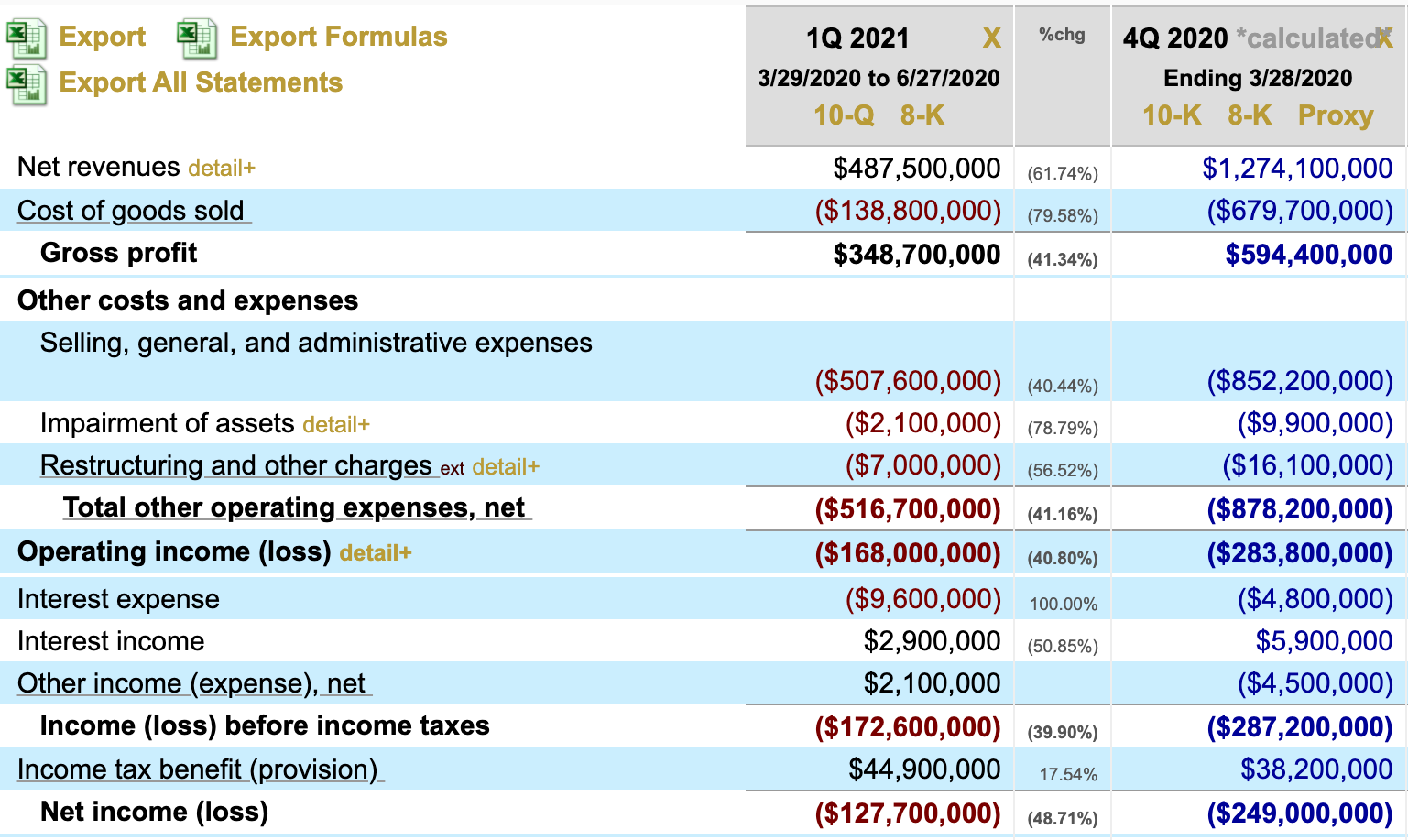Fashion house Ralph Polo Lauren ($RL) filed its latest quarterly report on Tuesday morning. Suffice to say, coronavirus has left the company’s financial performance looking more than a little tattered.
Let’s start with the income statement numbers. Revenues in Q2 2020 was $487.5 million, a 62 percent plunge from Q1 and down 66 percent from the year-ago period. The firm also posted a net loss of $127.7 million for the quarter.
If you want to get academic about it, one could say at least Q2’s declines in operating income, net income, and EPS weren’t as bad as what RPL reported in Q1 — and indeed, those numbers were all worse in the first quarter. See Figure 1, below.

More alarming, however, is this item from the Statement of Cash Flows: net cash generated from operations swung from $754.6 million in Q1 to a loss of $70.3 million in Q2.
That is never a good thing. Yes, RPL still conjured up more cash from financing and investing activities, so it has enough money to keep the bills for now, but negative cash flow from operations can quickly lead trouble for a firm’s ability to continue as a going concern. Any time a firm posts negative numbers like that, management needs to act quickly to right the ship.
So what is going on with Ralph Polo Lauren, exactly? Let’s open the Interactive Disclosures database and take a look at what executives had to say.
Management gives a summary of how COVID-19 has affected business, and Ralph Polo Lauren is getting hammered from numerous directions at once:
- Lockdown orders that closed retail shops, both its own and those of department stores that are large wholesale buyers of RPL merchandise
- Layoffs and furloughs that leave consumers with fewer dollars to spend on clothing
- Stay-at-home orders that simply leave consumers with less need for new or upscale clothing; here at Calcbench, for example, we’ve all been wearing the same t-shirts for weeks on end
This paragraph captures the grim state of affairs:
In connection with the COVID-19 pandemic, the Company has experienced varying degrees of business disruptions and periods of closure of its stores, distribution centers, and corporate facilities, as have the Company's wholesale customers, licensing partners, suppliers, and vendors. During the first quarter of Fiscal 2021, the majority of the Company's stores in key markets were closed for an average of 8 to 10 weeks, resulting in significant adverse impacts to its operating results. Although nearly all of the Company's stores were reopened by the end of the first quarter of Fiscal 2021, the majority are operating at limited hours and customer capacity levels in accordance with local health guidelines, with traffic remaining challenged.
So what has management done in response? The COVID-19 summary lists several measures, most of which we’ve already seen other firms taking, too — suspension of cash dividends and share repurchase programs; employee furloughs; pay cuts for senior executives; stretching out payments to vendors; and so forth.
The company also issued $1.25 billion in new debt to cover general operating expenses while RPL figures out what to do next.
Another point worth pondering: many retail firms like RPL will need to embrace direct-to-consumer e-commerce sales even more if they want to weather the pandemic. Ralph Polo Lauren already does offer such sales on its website.
But when you look at the company’s segment reporting, one finds that RPL only reports geographic segments — not wholesale sales to other stores, sales from RPL stores, or e-commerce. So we have no idea how well any embrace of e-commerce might fare.
At least, there are no such disclosures yet. Maybe that’s a point financial analysts could raise on the next earnings call.